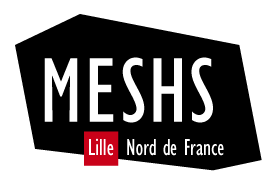Construire un processus de recherche en combinant analyse de réseaux et entretiens qualitatifs
Séance 11 du séminaire Méthodes mixtes en SHS.
Présentation
Cette onzième séance de notre séminaire Méthodes Mixtes s’intéresse à la façon dont les données quantitatives et qualitatives peuvent être utilisées conjointement pour la construction et l’analyse des réseaux sociaux.
Inscription gratuite et obligatoire, en ligne pour les personnels hors Université de Lille.
Nous écouterons :
- Fabien Eloire, Université de Lille, Clersé : "Parler des relations, modéliser des réseaux : un exemple d’enquête sociométrique"
- Timothée Chabot, Université Toulouse Jean Jaurès, LISST : "Complémentarité qualitatif-quantitatif en analyse de réseaux : l’intérêt des modèles génératifs"
Discussion : Léo Delpy, Université de Lille, Clersé.
Bibliographie de la séance 11
Fabien Eloire "Parler des relations, modéliser des réseaux : un exemple d’enquête sociométrique"
- Bidart Claire, Degenne Alain, Grossetti Michel, 2011, "La vie en réseau, dynamique des relations sociales", Le lien social, PUF.
- Degenne Alain et Forsé, Michel, 1994, Les réseaux sociaux, Armand Colin.
- Grossetti, Michel, "Les narrations quantifiées. Une méthode mixte pour étudier des processus sociaux", Terrains & travaux, vol. 19, no. 2, 2011, pp. 161-182.
- Lazega Emmanuel, 1998, Réseaux sociaux et structures relationnelles, Que sais-je ?, n° 3399, PUF.
- Mercklé Pierre, 2004, Sociologie des réseaux sociaux, Repères, La Découverte.
- Parlebas Pierre, 1992, Sociométrie, réseaux et communication, PUF.
Timothée Chabot "Complémentarité qualitatif-quantitatif en analyse de réseaux : l’intérêt des modèles génératifs"
- BLOCK P., KOSKINEN J., HOLLWAY J., STEGLICH C., STADTFELD C., 2018, "Change we can believe in: Comparing longitudinal network models on consistency, interpretability and predictive power", Social Networks, 52, p. 180 191. https://doi.org/10.1016/j.socnet.2017.08.001
- BOLIBAR M., 2016, "Macro, meso, micro: broadening the 'social' of social network analysis with a mixed methods approach", Quality & Quantity, 50, 5, p. 2217 2236. https://doi.org/10.1007/s11135-015-0259-0
- CHABOT T., 2021, From Diversity to Mixing? Socioeconomic Homophily in French Desegregated Middle Schools, Thèse de doctorat, Florence, European University Institute.
- CHABOT T., 2022, "L’homophilie sociale au collège. Amitiés et inimitiés entre élèves socialement distants dans quatre établissements mixtes", Revue française de sociologie, 63, 1, p. 65 111. https://doi.org/10.3917/rfs.631.0065
- CHABOT T., 2024, "How does socioeconomic homophily emerge? Testing for the contribution of different processes to socioeconomic segregation in adolescent friendships", Social Networks, 76, p. 160 173. https://doi.org/10.1016/j.socnet.2023.09.002
- CROSSLEY N., 2010, "The Social World of the Network. Combining Qualitative and Quantitative Elements in Social Network Analysis", Sociologica, 1, p. 0 0. https://doi.org/10.2383/3204
- EDWARDS G., 2010, "Mixed-method approaches to social network analysis", Working Paper, NCRM.
- EPSTEIN J.M., 2006, "Generative Social Science: Studies in Agent-Based Computational Modeling", STU-Student edition, Princeton University Press.
- FROEHLICH D.E., VAN WAES S., SCHÄFER H., 2020, "Linking Quantitative and Qualitative Network Approaches: A Review of Mixed Methods Social Network Analysis in Education Research", Review of Research in Education, 44, 1, p. 244 268. https://doi.org/10.3102/0091732X20903311
- HEALY K., 2017, "Fuck Nuance", Sociological Theory, 35, 2, p. 118 127. https://doi.org/10.1177/0735275117709046
- LIEBERSON S., HORWICH J., 2008, "Implication Analysis: A Pragmatic Proposal for Linking Theory and Data in the Social Sciences", Sociological Methodology, 38, 1, p. 1 50. https://doi.org/10.1111/j.1467-9531.2008.00199.x
- ROBINS G., PATTISON P., KALISH Y., LUSHER D., 2007, "An introduction to exponential random graph (p*) models for social networks", Social Networks, 29, 2, p. 173 191. https://doi.org/10.1016/j.socnet.2006.08.002
- SNIJDERS T.A.B., 2017, "Stochastic Actor-Oriented Models for Network Dynamics", Annual Review of Statistics and Its Application, 4, 1, p. 343 363. https://doi.org/10.1146/annurev-statistics-060116-054035




